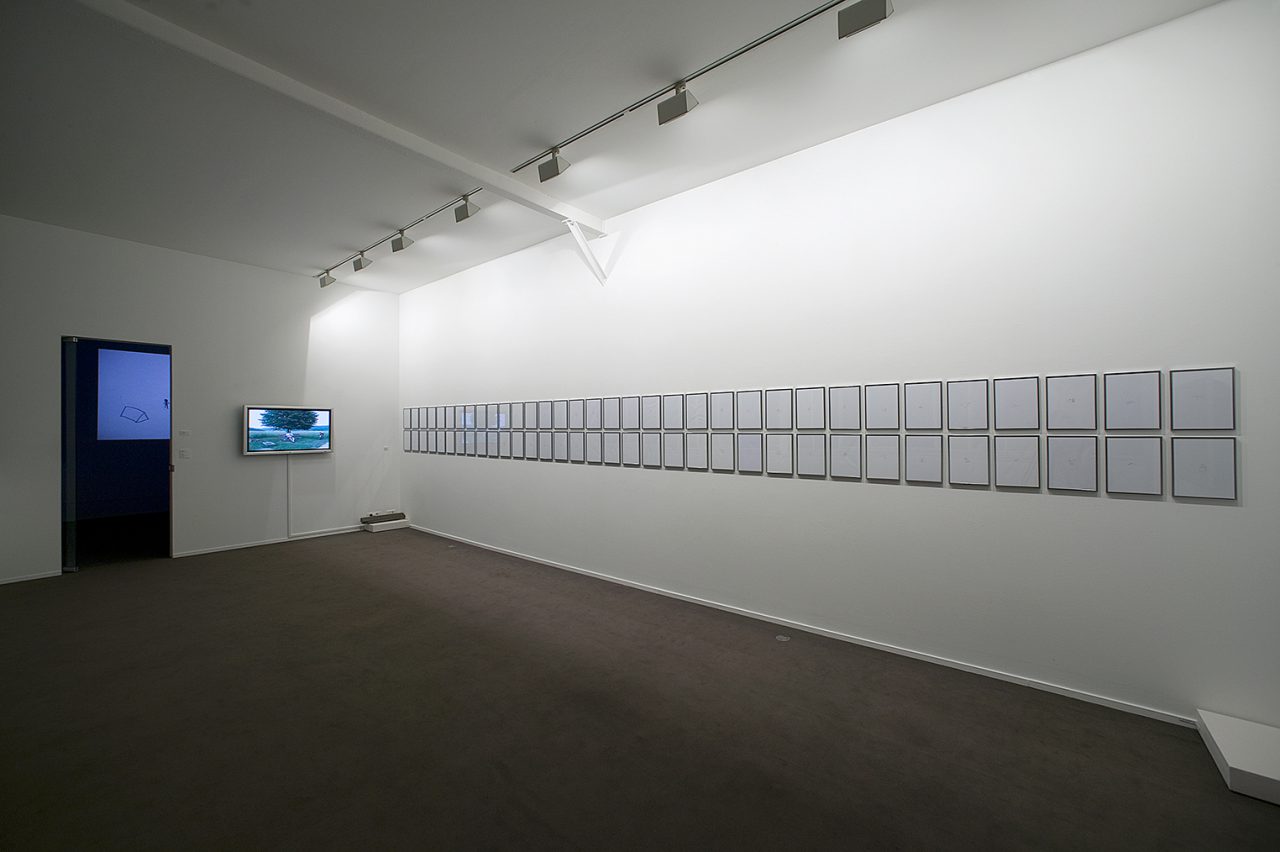For his first personnal exhibition at the Gallery Xippas, Denis Savary presents a collection of around sixty drawings and a selection of videos. His approach towards these mediums is representative of a singular form of simplicity.
Denis Savary draws small scenes, in pencil, comprised of only a few sketched lines placed in the centre of a standard sheet of A4 paper. Each line is mastered and the subject reveals itself furtively. Any addition to the motif would result in an alteration of the fragile apparition on the page. Day by day, by way of an immutable framework, the artist has fixed over a thousand images, which are then carefully stored away in cardboard boxes.
Nothing spectacular in Denis Savary’s videos : a fixed view of a landscape with people reduced to a single real time action. All appears familiar and yet all is incongruous. Filmed in locations which are close to the artist both emotionally and geographically, without us being able to determine if the scenes have been staged, simulated or simply recorded, the videos are realised with disoncerting economy. The simpliciy of the views and the staged actions generate a sense of expectation. Denis Savary invites the spectator to find a space for contemplation and enchantment within this reality. We are led to believe in the seizure of an unexpected moment, an encounter merely echoed in the works.
With La Courtisane, his first video realised in 2003, Denis Savary plays on the incongruity of the image and the telescoping of sounds, by staging a vielle player sat on the edge of a cross-country track, whilst motorcyclists drive around.
La Diane (2004) follows a fanfare of a dozen people come to announce a village fair. They are sat on the back of a truck driving through a deserted village. The truck stops on a few occasions, giving the musicians time to play a military melody, it then starts off again to stop a bit further on.
Brit (2004) is filmed in the calm countryside. A young man wearing shorts and trainers has arrived there by scooter. He is sat on a bench at the foot of a tree, practising the trumpet.
Le Must (2004) was filmed in a nightclub. A single fixed view, lasting 60 minutes, represents a deserted dance floor, animated only by stroboscope lighting. Through the music we can distinguish conversations taking place at the bar in the darkened area located at the edge of the image.
Apremont (2005) represents a group of young people in medieval costume attempting to overturn a jeep, fallen on its side following an accident in the middle of the forest. The scene shot in real time, as is customary for all Denis Savary’s videos, ends with the car departing.
Belvedere (2005) is the result of a chance encounter where a group of young people stood in mid-water are filmed against daylight,. It seems that nothing is happening. We don’t quite know what they are doing there, then, out of the blue and in the blazing sunlight, small sail boats appear in the distance.
With Medina (2005), Denis Savary presents a hallucinatory vision of the Jemâa-el-Fna square in Marrakech, the market sellers, the stalls and the lanterns take over the place at night fall.
In Saint Martin, a video realised in 2006, a figure only barely perceptible climbs up the darkened shaded side of the church ruins. The single shot of the film can be considered in the current context of cinematographic situations.
Denis Savary also realises animated drawings where each action is sketched in pencil on a single sheet of paper. He draws, erases and draws over again on the same page, therefore creating a short narrative. The stains and traces left over from the successive rubbing produce a sense of movement. The sound track consists only of the ambient sounds and the drawings being made.
